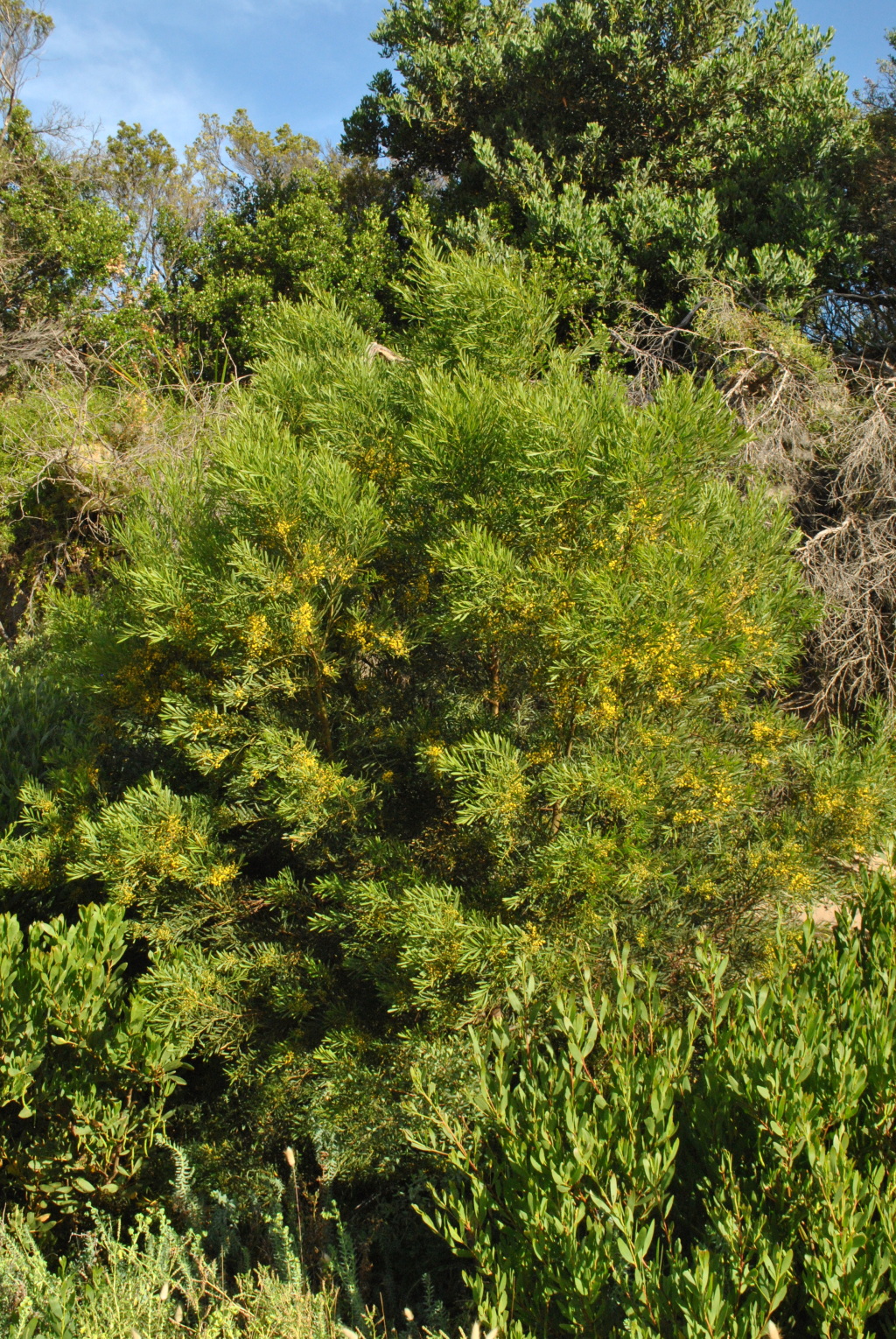Acacia uncifolia
(J.M.Black) O'Leary Coast WirildaBushy shrub or tree, 5–10 m high, often spreading by suckers and coppicing to form dense groves; bark smooth, becoming fissured, grey to brown; branchlets angular at apices, glabrous, reddish. Phyllodes oblanceolate to narrowly oblanceolate, 3–6.5 cm long, 3–10 mm wide, glabrous, green, rather abruptly narrowed at the uncinate to subuncinate apices, mucro distinct and delicate; veins pinnate, obscure except for midrib; gland not prominent, 0–8 mm above pulvinus. Raceme with rachis 2–4(–5) cm long, glabrous; peduncles 2–5 mm long, slender, glabrous; heads globular, (16–)18–30-flowered, cream to pale yellow. Flowers 5-merous; sepal united. Pods linear, to 16 cm long, 5–7 mm wide, firmly chartaceous, glabrous; seeds longitudinal, oblong to oblong-elliptic, 4–6 mm long, dull to slightly shiny, dark brown to black; funicle three-quarters or more encircling seed, red-brown to blackish, aril clavate. Flowers year-round, mostly Oct.–Nov.
VVP, VRiv, GipP, OtP, CVU, WPro, HSF, Strz. SA, Tas (native and naturalised). Occurs from near Geelong to Wilsons Promontory, mainly on coastal dunes or near saltmarsh, chiefly on calcareous sand and sandy loam soils.
Closely resembles Acacia provincialis and A. retinodes, and previously treated as a variety of the latter. Acacia retinodes is now regarded to be endemic to the Mount Lofty Ranges in South Australia. Acacia uncifolia may be distinguished from A. provincialis by its suckering habit, smaller phyllodes with a distinctly uncinate tip, and smaller flower heads.
Entwisle, T.J.; Maslin, B.R.; Cowan, R.S.; Court, A.B. (1996). Mimosaceae. In: Walsh, N.G.; Entwisle, T.J., Flora of Victoria Vol. 3, Dicotyledons Winteraceae to Myrtaceae, pp. 585–658. Inkata Press, Melbourne.
 Spinning
Spinning

